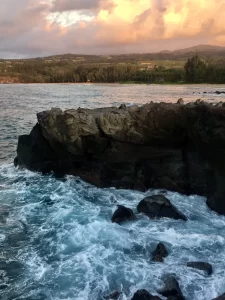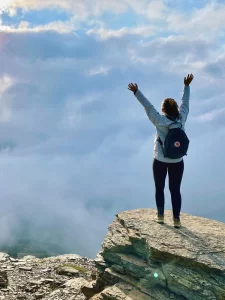Split is hands down one of the best cities to visit in Croatia (and my personal favorite!). It has great restaurants, lots of history, excellent nightlife, and is overall so beautiful to wander through. Located on the Adriatic Sea, Split also has some lovely beaches in all directions. This Split travel guide will go over everything you need to know before visiting, with lists of all the best things to eat, see, and do in Split.
Disclosure: Some of the links below are affiliate links. When you purchase through links on my site, I may make a small commission (at no extra cost to you!).
Quick facts about Split
- Region: Dalmatia
- Language: Croatian
- Currency: Croatian kuna (euros are also accepted in some places)
- Population: ~210,000 people
- Founded: 2nd or 3rd century BC
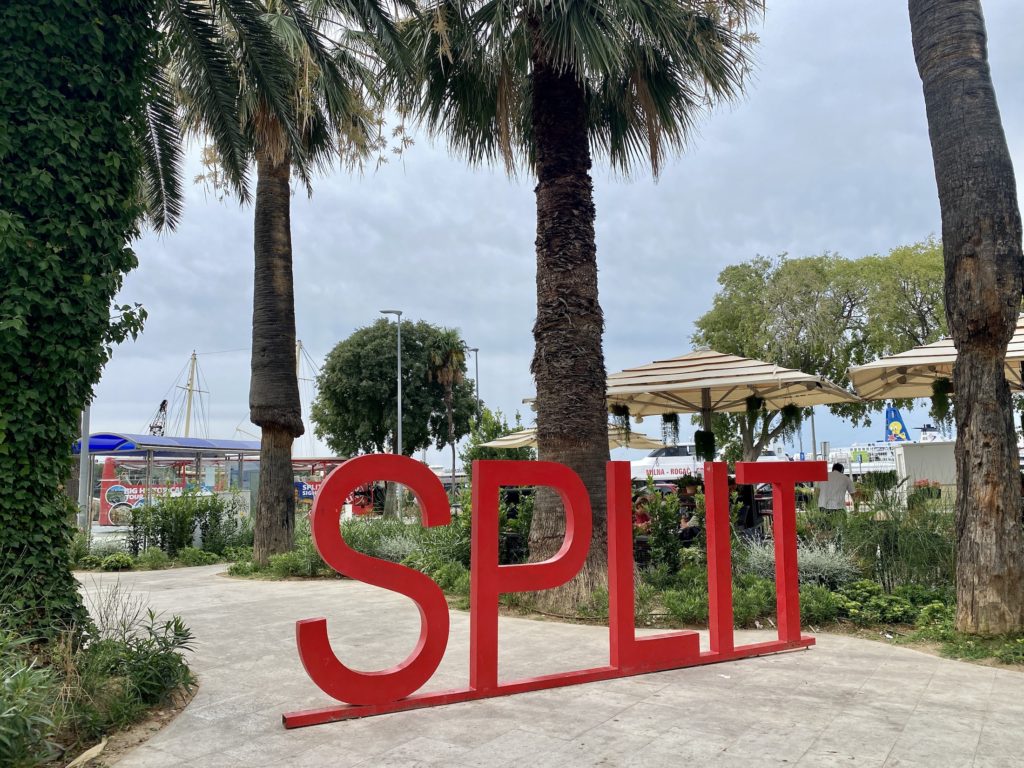
How to get to Split
By plane
If you’re coming to Split from another country in Europe, you’ll most likely fly into the Split Airport (SPU). Despite being an international airport, it is quite small and can take a while to get through. My flight to Split arrived around 10 pm from Amsterdam and it took around an hour and a half to make it through customs on arrival.
The Split Airport is located near the town of Trogir, about 12.4 mi (20 km) from Split. To get to the city from the airport, you can take a direct shuttle, a public bus (lines 2, 37, or 38), a taxi, or an Uber.
By car
Split is easy to get to by car. It sits at the end of the Zagreb-Split freeway, or A1 route, that crosses the entire country.
Driving times from:
- Zadar: 1 hour 45 minutes
- Dubrovnik: 3 hours — you’ll need to cross the Bosnia and Herzegovina border
- Zagreb: 4 hours
Split makes a great stop on any Balkans road trip itinerary!
By ferry
Ferry boats are a popular way to get to Split from other places in the country. If you’re coming from Dubrovnik in particular, the ferry is a great option because you don’t have to cross the Bosnian border. You can also take a ferry to Split from the Croatian islands and several cities in Italy.
By bus
If you’re ballin’ on a budget, buses are probably the cheapest way to get to Split (although not usually the fastest or most comfortable). Flixbus is a popular option with fares that start at 99 cents.
Where to stay in Split
Budget:
Mid-range:
Bougie:
Best things to do in Split
Diocletian’s Palace
Diocletian’s Palace is a UNESCO World Heritage Site that makes up about half of Split’s Old Town.
Built in the 4th century AD for the Roman emperor Diocletian, the palace was actually more similar to a large fortress because half of it was meant to house a military garrison. Today, it’s one of the most well-preserved examples of Roman architecture in the Balkans. The remains are spread over more than 200 buildings in the Old Town.
Wandering around the outside of Diocletian’s Palace is free. You’ll need to pay an entry fee if you want to visit the excavated remains of the basement.
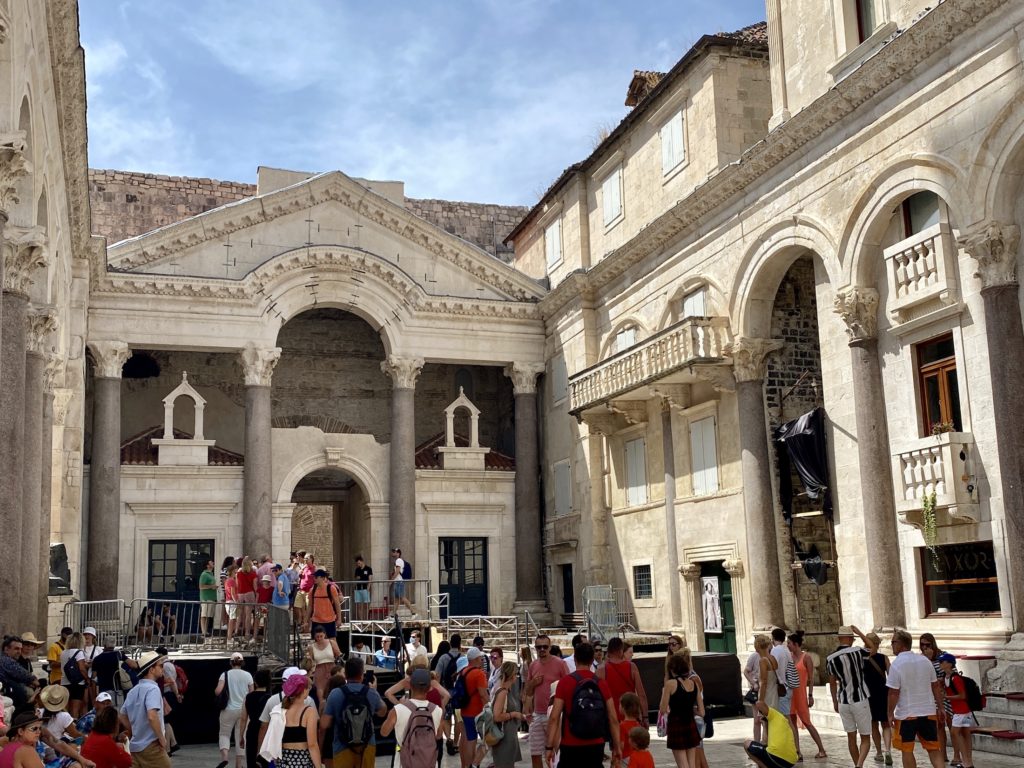
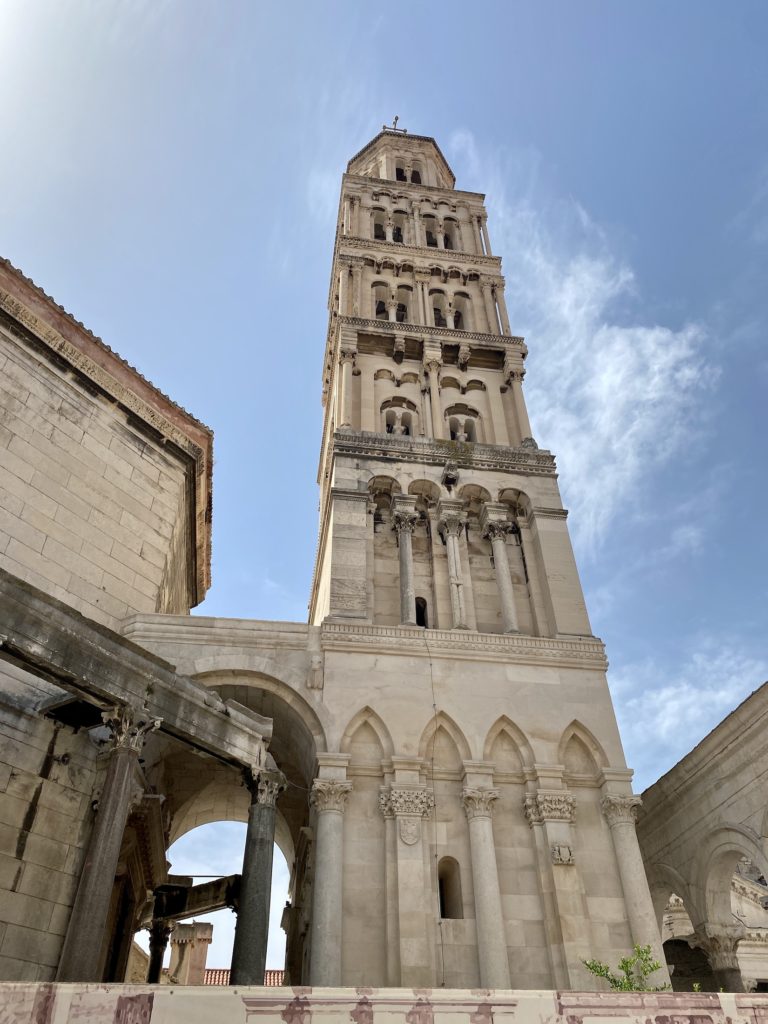
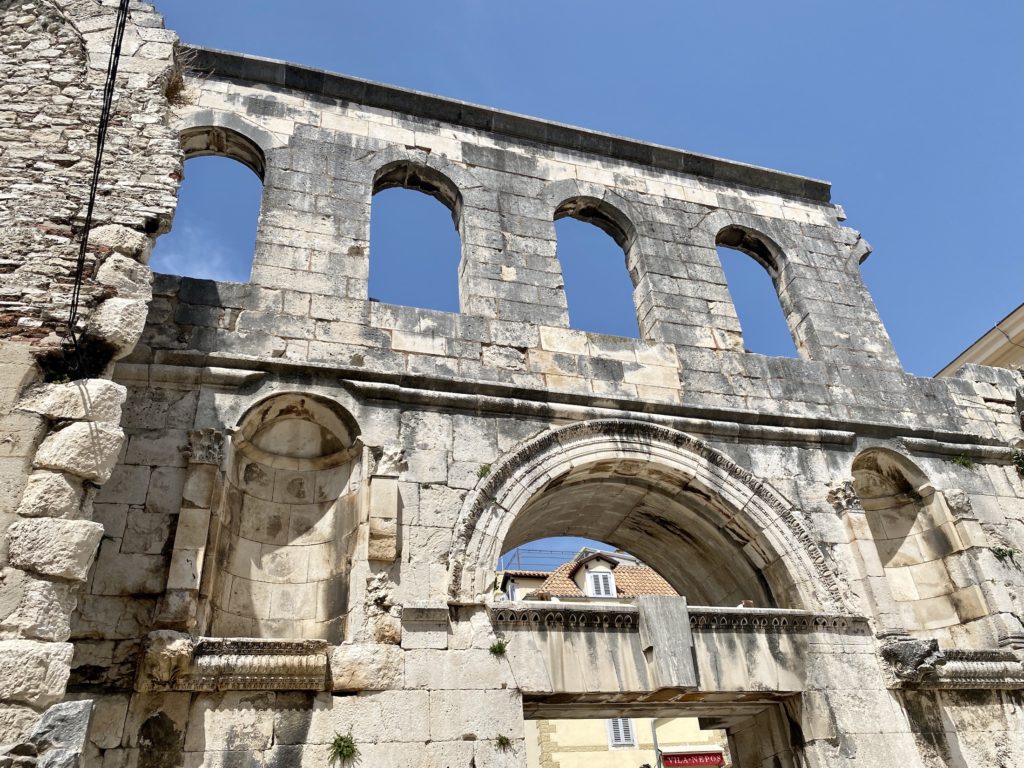
Riva promenade
The Riva is a seafront promenade that runs alongside the edge of Diocletian’s Palace. It is a bustling area of the city where you’ll find heaps of shops, cafes, and restaurants with outdoor seating. At night, the Riva promenade is particularly lively and makes a good spot to enjoy after-dinner drinks (several pub crawls also start on the Riva).

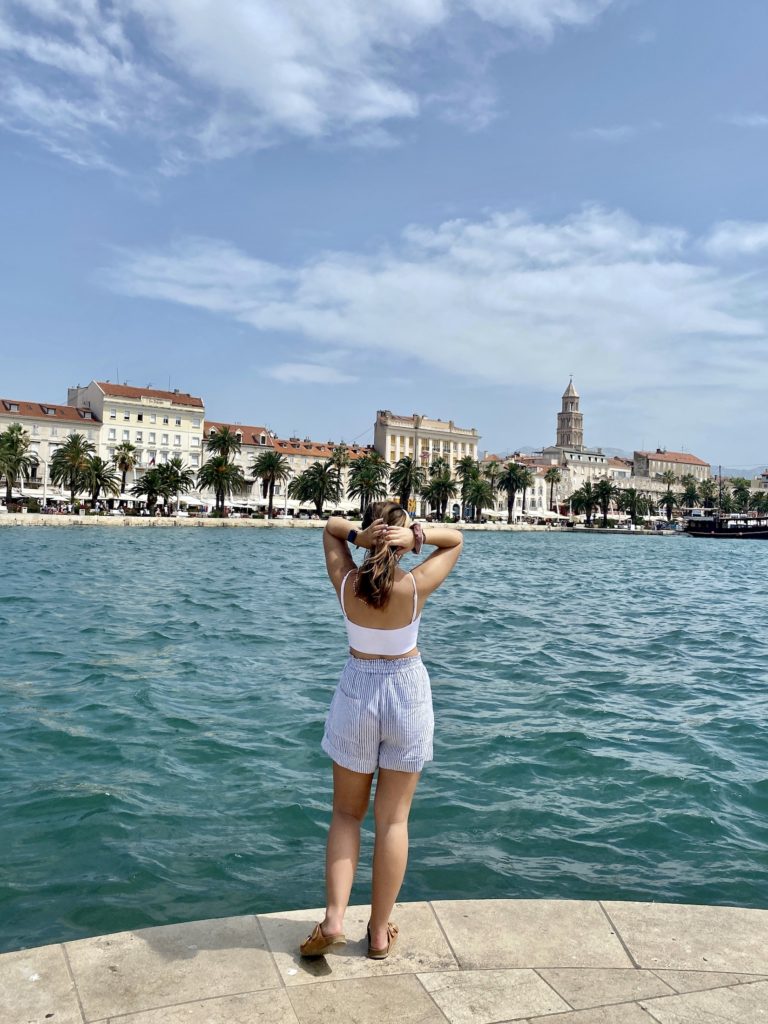

Old Town
No Split travel guide would be complete without talking about the city’s Old Town. More than just the remains of Diocletian’s Palace, Split’s Old Town has tons of historic buildings and delicious restaurants within its walls.
Some must-see sights in Split’s Old Town:
- Cathedral of St. Domnius (Sveti Duje): Oldest Catholic cathedral in the world
- Ethnographic Museum: Exhibits on traditional costumes, crafts, and culture
- Jupiter’s Temple: Baptistery formerly used to worship the Roman god Jupiter
- The Vestibule: Previously a formal entrance to the imperial apartments
- The Golden Gate: Grand entrance to Diocletian’s Palace
- Republic Square: Venetian-style square near the water
- Fruit square (Voćni trg): Former spot for fruit markets and home to a Venetian tower
- People’s square (Pjaca trg): Beautiful facades and a large clock tower

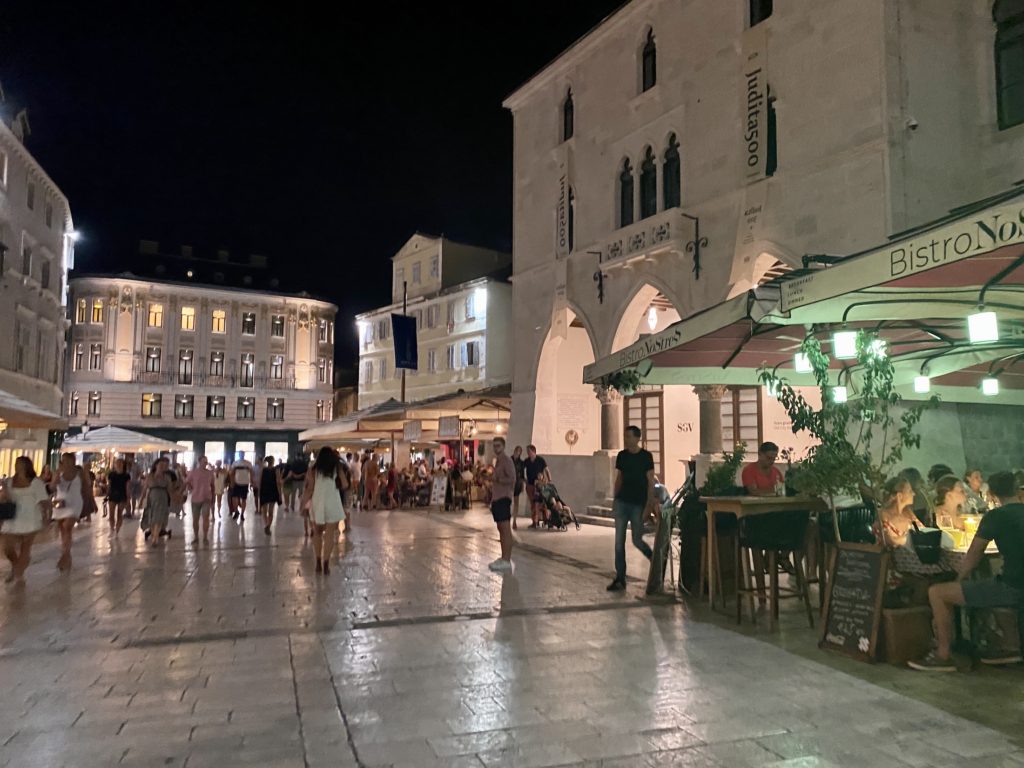
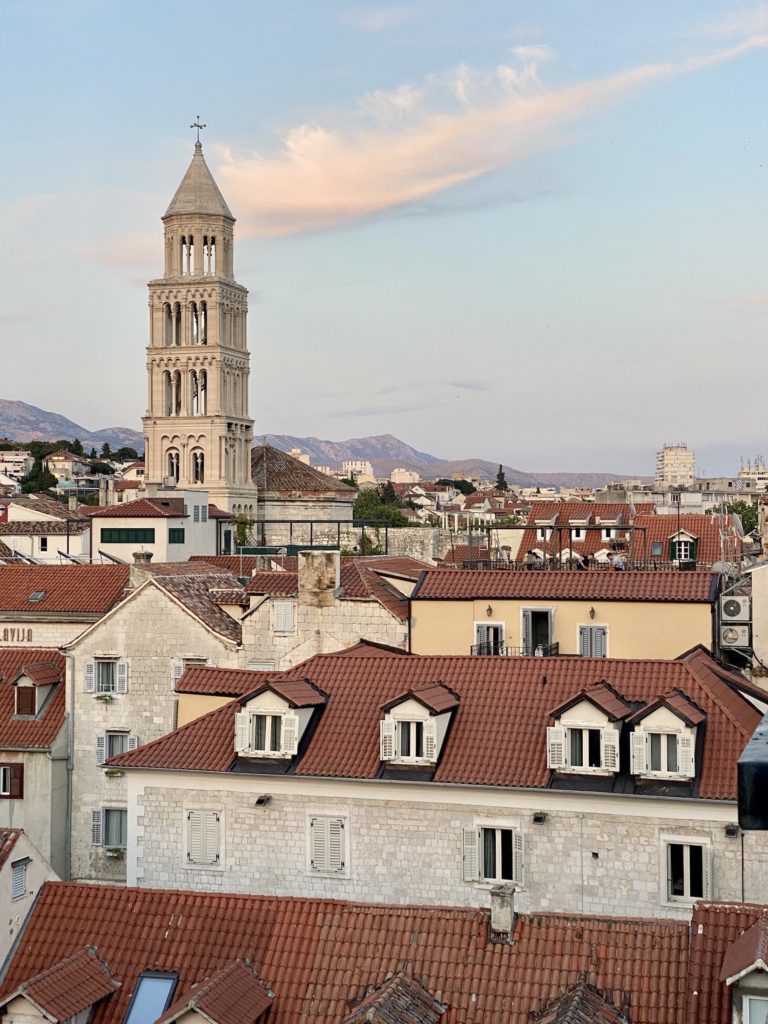
Marjan Park
Marjan Park is a large, hilly park on Split’s western end. As the city’s biggest and most popular park, there are lots of things to do within. You can find various jogging and hiking trails, lookout points, and a botanical garden to enjoy the great outdoors. The park can be accessed via public bus line 12.
Things to do in Marjan Park:
- Climb up the Marjan Hill stairs
- See the St. Jerome Church
- Visit the Mestrovic gallery
- Check out the view from Weather Tower Viewpoint
- Rock climb near Karepić’s Tower
Beaches
Although Split’s beaches won’t be the most pristine that you’ll find in Croatia, they’re lovely nonetheless. The beaches range from sandy to rocky, calm to crowded, basic to developed — and everything in between.
- Bacvice: Sandy beach closest to town
- Žnjan City Beach: Rocky beach with seaside bars and clubs
- Ježinac, Kasjuni, Kupalište Bene: Within Marjan Park
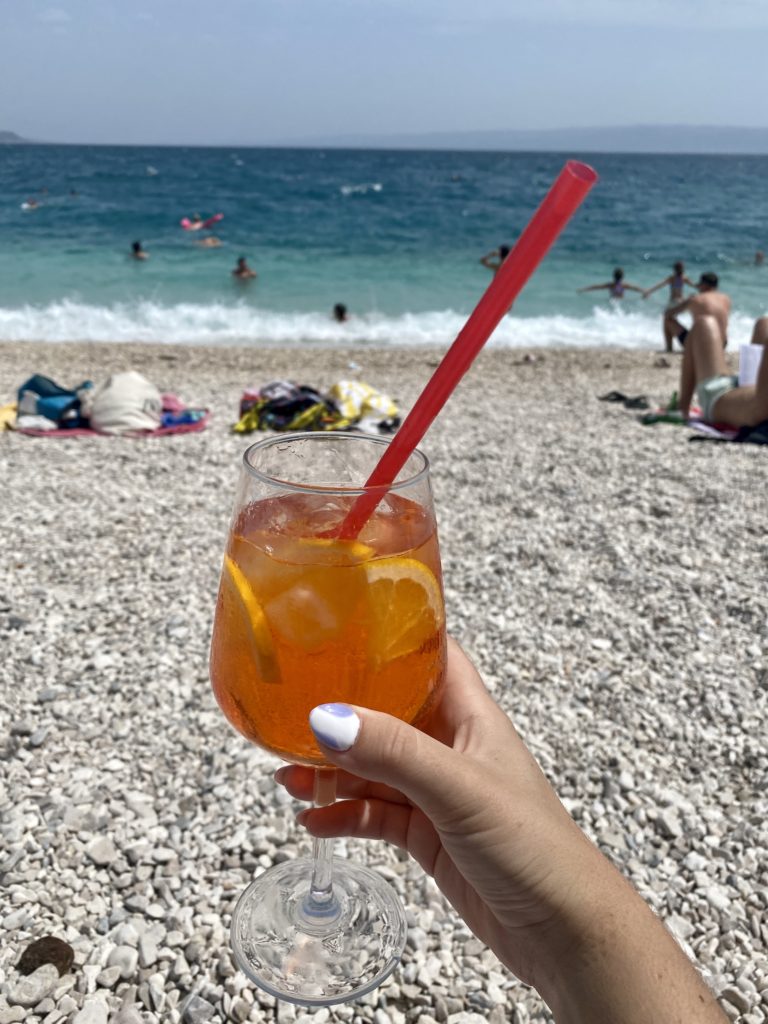
Ultra Europe
If you’re into music festivals, make sure to put Ultra Europe on your list. This popular festival franchise happens every year in July, bringing in thousands of people to the area (mostly from around Europe).
Held in Split’s Poljud Stadium, the festival has four stages that house the world’s top electronic dance music DJs. The music goes all night and you’ll find plenty of after parties around the city all week long.

Best restaurants in Split
Split is a paradise for foodies. You’ll find lots of fresh fish and seafood, pasta, and Mediterranean fare, as well as Asian, Middle Eastern, and European cuisines. Apart from regular restaurants, there are also plenty of fast food places, lounges, and wine bars.
Here were some of my favorites:
- Brasserie on 7
- Adriatic Sushi & Oyster bar
- MakaMaka Açaí & Poke bar
- Fabrique Pub
- Articok
- Fig
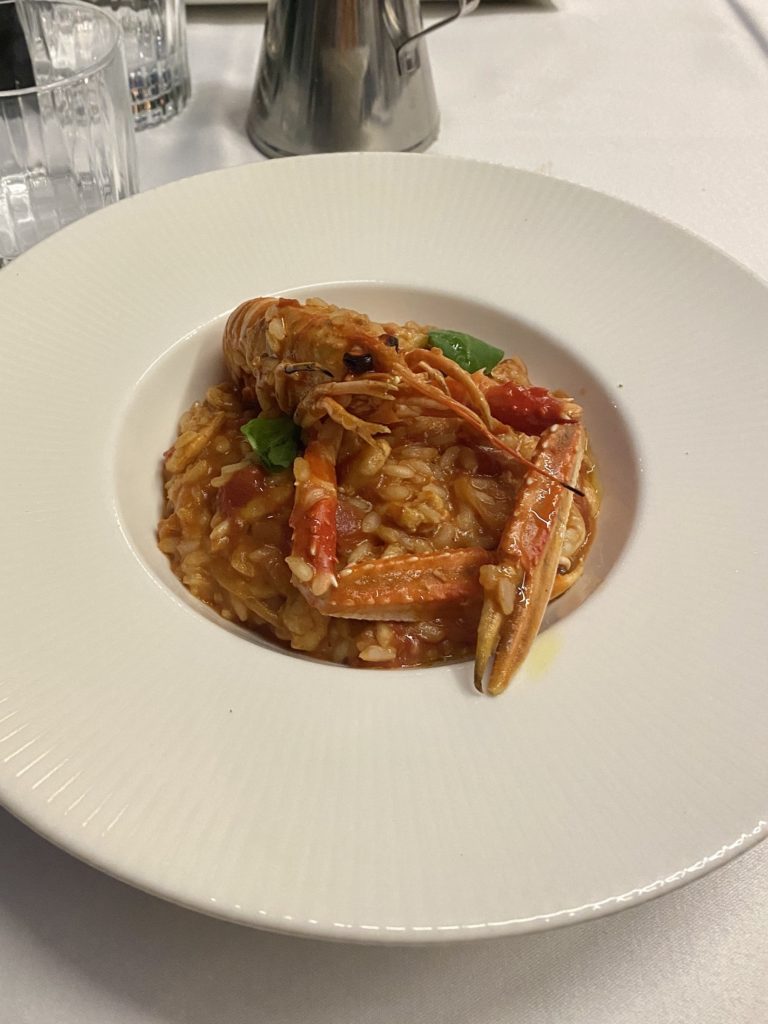
Best day trips from Split
Split is an excellent base for lots of different day trips around the region. You’ll find an ample amount of different tour operators around Diocletian’s Palace that can organize trips for you. Otherwise, it’s easy enough to buy bus or ferry tickets to wherever you want to go.
Croatian islands
My absolute favorite day trip from Split was visiting the nearby Croatian islands.
There are two ways to do this: booking an organized tour or purchasing ferry tickets and going yourself. We decided on a tour because we wanted to see as many islands as possible in one day. Our tour was with Viator and I highly recommend it! We visited five islands on a speedboat and got to see much more than we otherwise would have.
If you’re planning to visit the islands yourself, plan on only seeing one or two per day as the ferry rides can take a while. It’s also possible to stay overnight on most islands if you want to spend more time there.
Croatia has more than 1200 islands and islets — here are a few of the best to visit:
- Hvar
- Vis
- Brač
- Korčula
- Blue Grotto on the island of Biševo
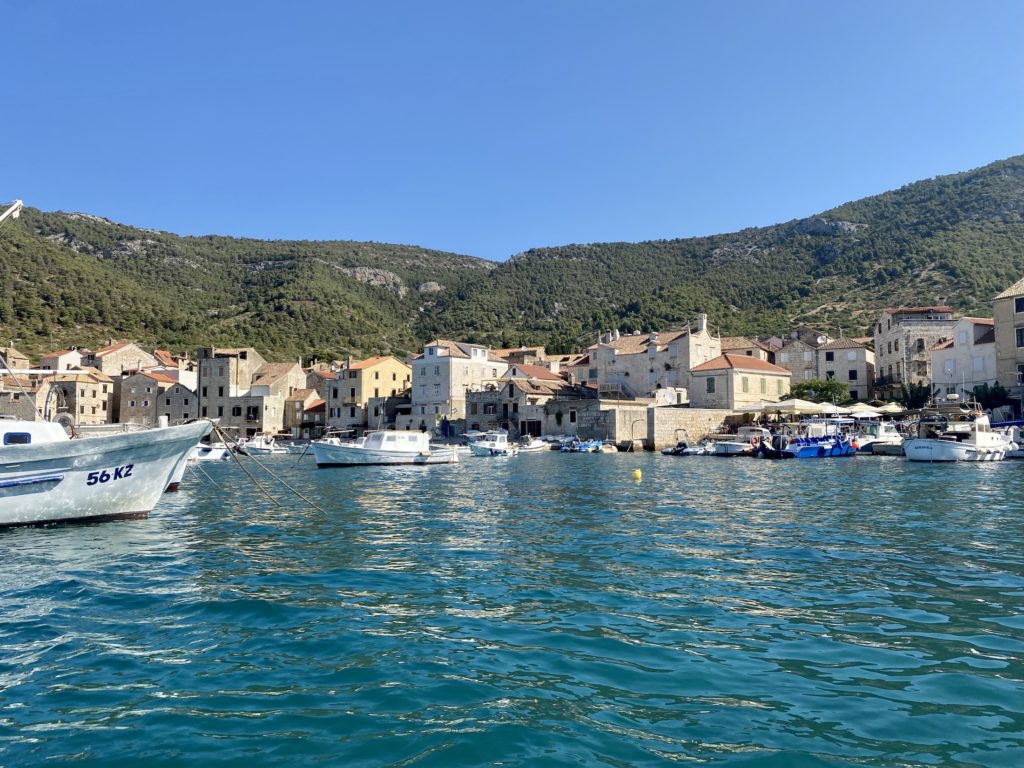
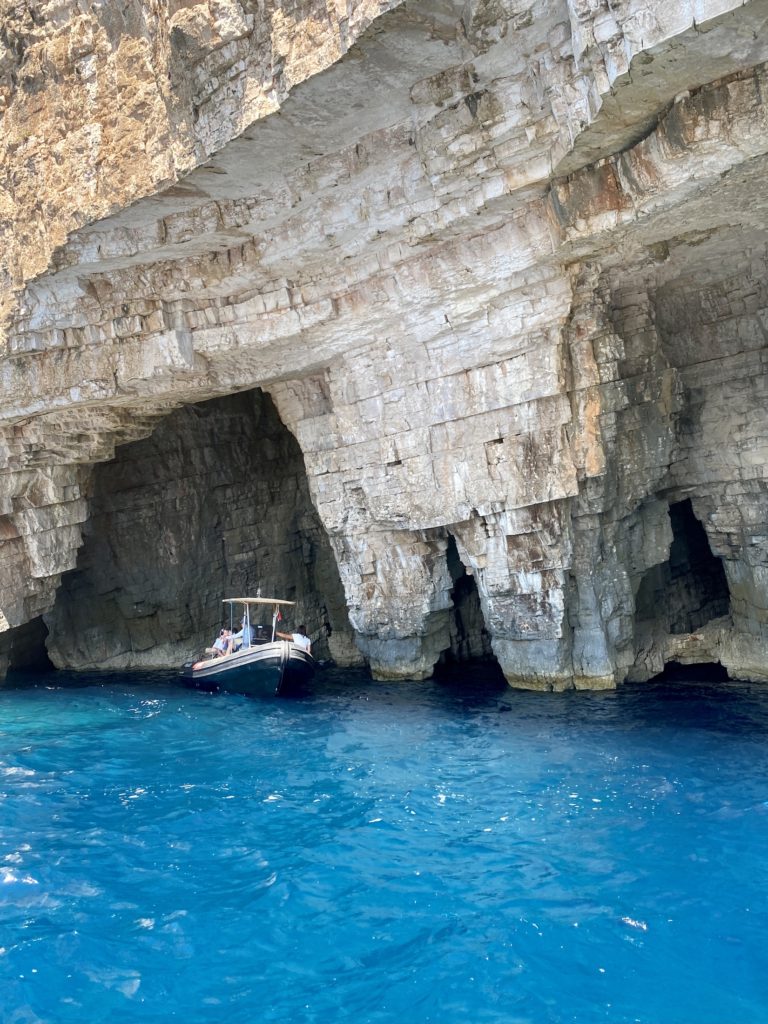
Krka National Park
Krka National Park is about a 1.5-hour drive from Split. The park is famous for its multiple waterfalls (Skradinski Buk and Roški Slap, among others) that crash into the Krka river. There is also an island with a Roman Catholic monastery (Visovac) that you can reach by boat within the park.
You can get to Krka National Park by car, public transportation, or organized tour. If you’re using public transit, you’ll need to take the bus from Split to Skradin, then the ferry to Skradinski Buk.
Entrance fees range from 30 HRK (~$4.75 USD) in the off-season to 200 HRK (~$31 USD) during the summer.
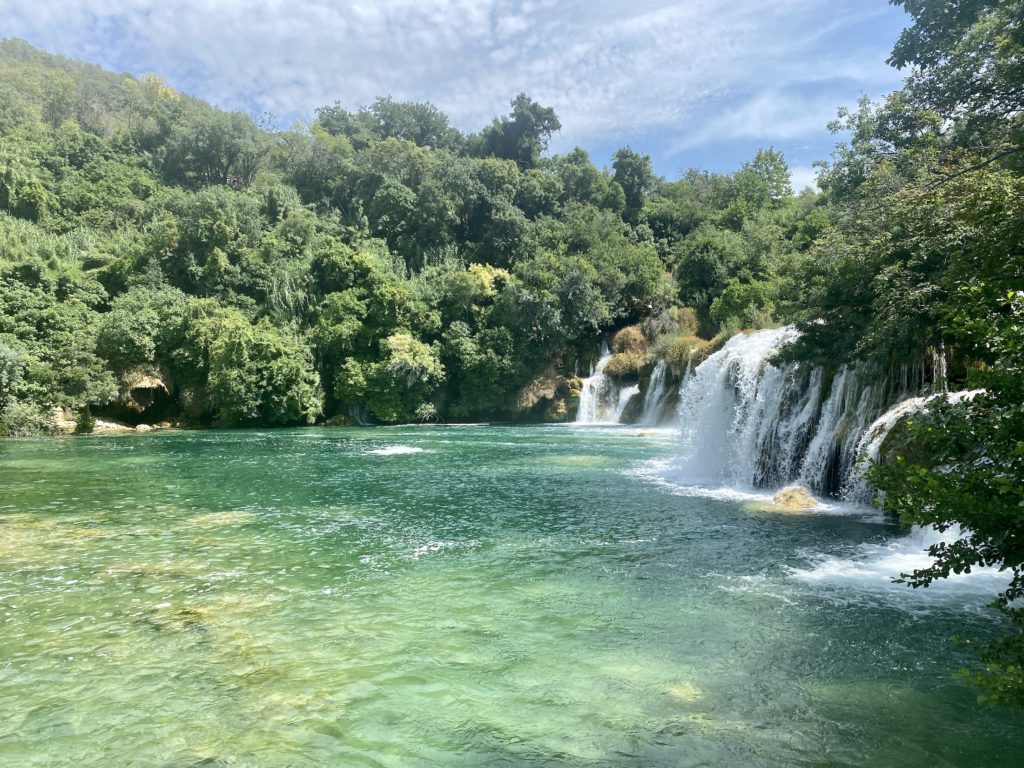
Makarska
Makarska is a popular beach town located about an hour’s drive from Split. The area is unique because the horseshoe-shaped beaches are surrounded completely by the Biokovo mountains. You actually need to drive through the mountains to reach the coast, making the drive absolutely beautiful!
You can get to Makarska by car or by public bus. Once there, you can enjoy spending time on the beach or go on one of the many hikes around the nearby mountains.
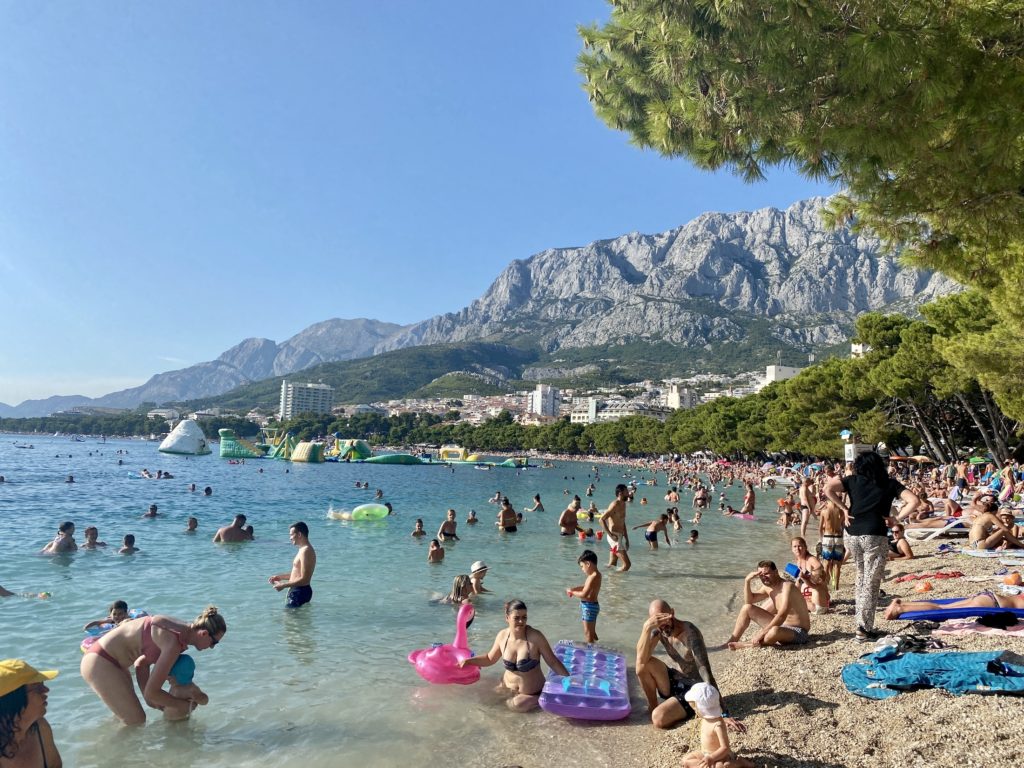
Book a tour in Split
Thank you for reading this Split travel guide! Look out for more posts about our trip to the Balkans coming soon.
xoxo Niki
